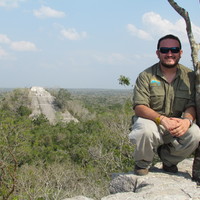Manuales by Fundacion Esfera
This is an updated version of the first Tapir Veterinary Manual published by the IUCN/SSC Tapir S... more This is an updated version of the first Tapir Veterinary Manual published by the IUCN/SSC Tapir Specialist Group (TSG) in 2007. Several veterinarians, biologists, nutritionists, reproduction physiologists and researchers reviewed and made contributions to this document based on their in-situ and/or ex-situ experience with the four tapir species.
The 13 Chapters and several appendices in this manual offer valuable information on many important topics for veterinarians working with tapirs, including: handling tapirs in the wild and in captivity, anesthesia protocols, treatment protocols and guidelines for medical and nutritional
care.
Our hope is that this text will be helpful to all professionals working with
tapir species around the world, and will contribute to the conservation of
tapirs and their remaining habitats.
Papers by Fundacion Esfera

PloS one, 2015
Coastal ecosystem modifications have contributed to the spread of introduced species through alte... more Coastal ecosystem modifications have contributed to the spread of introduced species through alterations of historic disturbance regimes and resource availability, and increased propagule pressure. Frequency of occurrence of the Manila clam (Venerupis phillipinarum, Veneridae) in Southern California estuaries has increased from absent or sparse to common since the mid-1990s. Potential invasion vectors include seafood sales and aquaculture, and spread from established northern populations over decades. The clam's post-settlement habitat preferences are, however, uncertain in this region. Our project aimed to identify factors associated with established patches of the clam within a bay toward the southern end of this introduced range. During summer 2013, we sampled 10 tidal flat sites in Mission Bay, San Diego; each containing an area with and without hard structure (e.g., riprap, boulders). We measured likely environmental influences (e.g., sediment variables, distance to ocean)....

The EMBO Journal, 2009
RepB initiates plasmid rolling-circle replication by binding to a triple 11-bp direct repeat (bin... more RepB initiates plasmid rolling-circle replication by binding to a triple 11-bp direct repeat (bind locus) and cleaving the DNA at a specific distant site located in a hairpin loop within the nic locus of the origin. The structure of native full-length RepB reveals a hexameric ring molecule, where each protomer has two domains. The origin-binding and catalytic domains show a three-layer a-b-a sandwich fold. The active site is positioned at one of the faces of the b-sheet and coordinates a Mn 2 þ ion at short distance from the essential nucleophilic Y99. The oligomerization domains (ODs), each consisting of four a-helices, together define a compact ring with a central channel, a feature found in ring helicases. The toroidal arrangement of RepB suggests that, similar to ring helicases, it encircles one of the DNA strands during replication to confer processivity to the replisome complex. The catalytic domains appear to be highly mobile with respect to ODs. This mobility may account for the adaptation of the protein to two distinct DNA recognition sites.











Uploads
Manuales by Fundacion Esfera
The 13 Chapters and several appendices in this manual offer valuable information on many important topics for veterinarians working with tapirs, including: handling tapirs in the wild and in captivity, anesthesia protocols, treatment protocols and guidelines for medical and nutritional
care.
Our hope is that this text will be helpful to all professionals working with
tapir species around the world, and will contribute to the conservation of
tapirs and their remaining habitats.
Papers by Fundacion Esfera
The 13 Chapters and several appendices in this manual offer valuable information on many important topics for veterinarians working with tapirs, including: handling tapirs in the wild and in captivity, anesthesia protocols, treatment protocols and guidelines for medical and nutritional
care.
Our hope is that this text will be helpful to all professionals working with
tapir species around the world, and will contribute to the conservation of
tapirs and their remaining habitats.